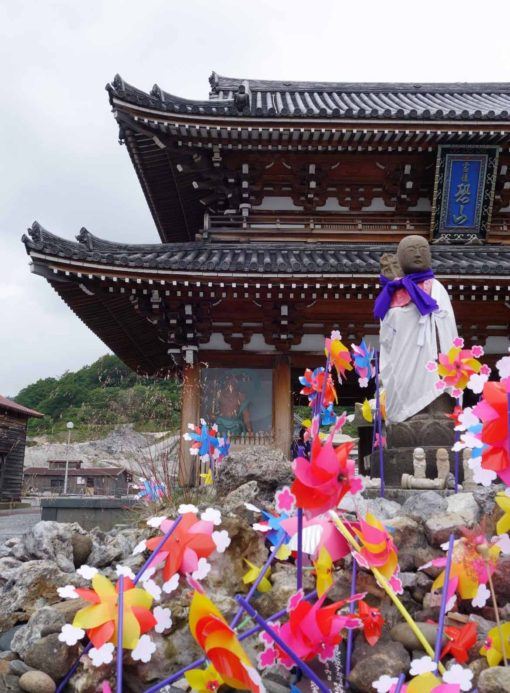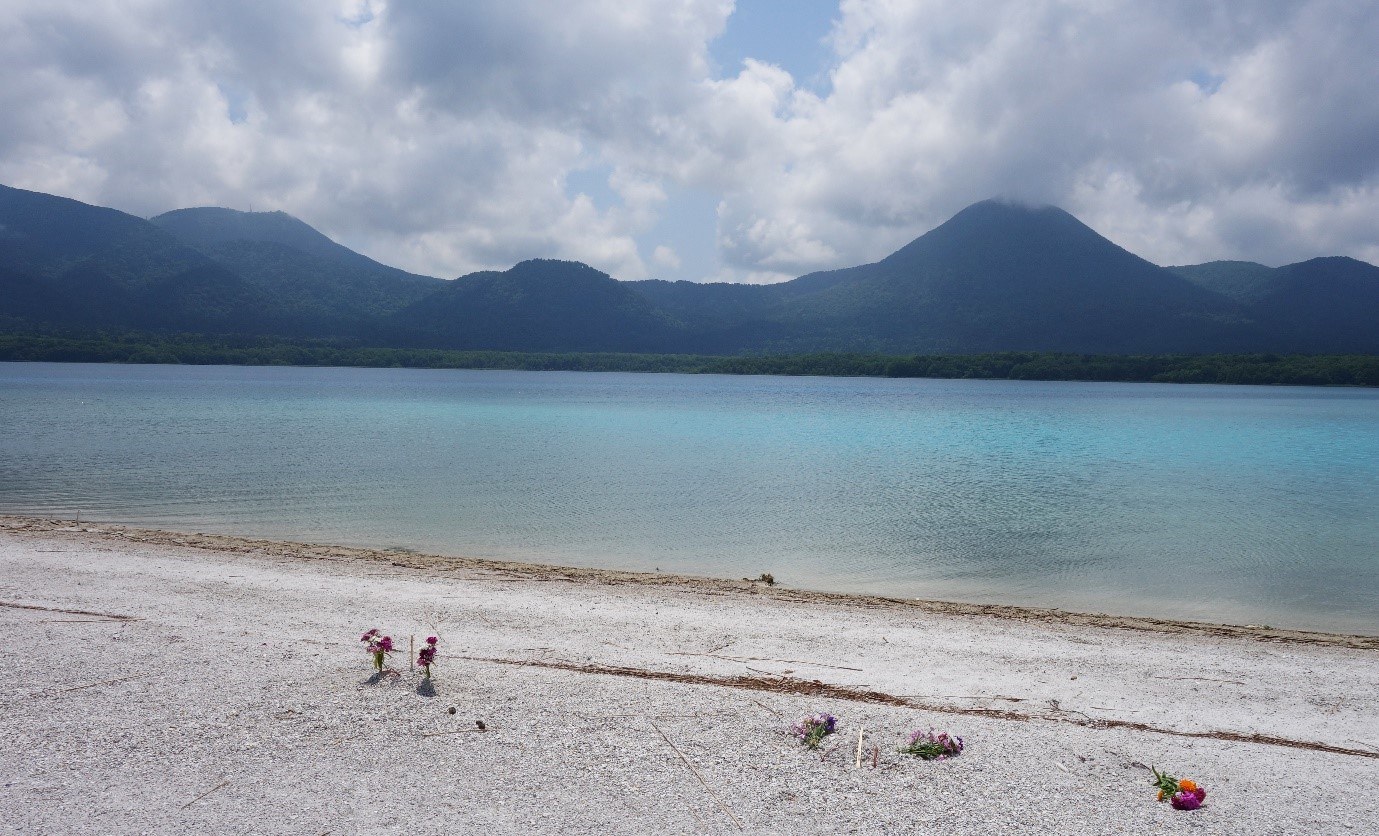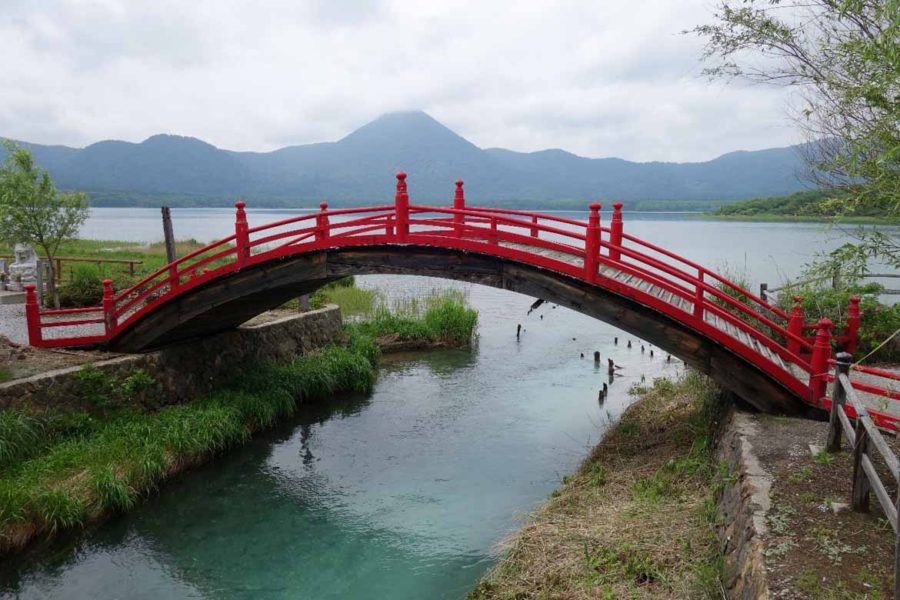Like this post? Help us by sharing it!
Located right at the northern tip of Honshu, Japan’s main island, the axe-shaped Shimokita Peninsula may not (yet) be somewhere on your wish list of places to visit in Japan. However even in this remote part of Japan you can find one of the country’s top three religious sights, some of the freshest and most delicious tuna in the world, wild horses strolling along rocky beaches and rugged mountain landscapes filled with natural hot springs.
Our travel consultant Lawrence decided to rent a car for the day and explore some of what the area has to offer. Below are his top five recommendations and some tips if you decide to visit yourself.
Osorezan: Japan’s “Gateway to Hell”
Known by such names as “Gateway to Hell”, “Burning Mountain” and “Mount Fear”, Osorezan might not sound like the kind of place to visit on holiday. However the eerie beauty of the area belies its unpleasant names.
Located in a volcano caldera, Mount Osore is ranked in the top three holy sites in Japan (alongside Mount Koya and Hieizan in Kyoto) and was founded by the Japanese Buddhist preist En’nin about 1,200 years ago. One night while studying in China, En’nin had a mysterious dream in which a holy monk said to him “When you return to Japan, go eastward. You will find a sacred mountain thirty days’ walk from Kyoto”. En’nin finally found Osorezan and knew this was the place he had been looking for. He then founded Bodai-ji Temple on this site.

As you walk around Bodai-ji, you will see many small statues representing the bodhisattva, “Jizo”. Jizo vows to suffer hell himself to alleviate the pain of others condemned to the underworld. Thanks to these vows, Osorezan, buried deep in the mountains, has become an area of salvation where absolute peace and happiness are freely given.

As you approach Osorezan you will start to notice quite a strong whiff of sulphur in the air. The reason for this soon becomes clear as you walk around the temple grounds and see many small areas of the ground bubbling away as volcanic gases rise to the surface through pools of water.

Bodai-ji Temple sits on the edge of Lake Usori. Although the waters may look very blue and beautiful, they are actually toxic due to the high sulphur content. It is said that souls of the dead must cross this lake on their way to the afterlife.
Cape Oma: Honshu’s northernmost point
Cape Oma is the northernmost tip of Honshu (Japan’s main island) and on clear days it is possible to see over to Hakodate city on the island of Hokkaido. Sadly on the day I visited, the whole cape had been engulfed by fog.
The journey was not a wasted one though as Cape Oma is also famous for the best quality tuna in Japan. Oma Tuna is caught locally and then sent to Tokyo’s famous Tsukiji fish market where it is traded at extremely high prices. In 2013 a bidding war started between the owners of two rival sushi chains and an Oma tuna was sold in Tsukiji for a record 155.4 million yen (1.8 million dollars)!

Cape Shiriya
Cape Shiriya is located at the northeast of the Shimokita Peninsula. Standing right on the edge of this cape is Shiriyazaki Lighthouse. The lighthouse is one of 26 built in the Meiji Period by the British engineer, Richard Brunton, and although still working, is not accessible to the public.


The area surrounding the cape is a small protected park where wild horses roam the rugged landscape and beaches.

Yagen Valley
Located right in the centre of Shimokita Peninsula, Yagen Valley is an area of thick forest and has some great natural hot springs and hiking areas.


The statue sitting on the side of the hot spring above is a “Kappa” – a mythical Japanese creature that allegedly lives in the area. The mischievous Kappa’s favourite snack is young children, however they are happy to exchange this meal for a cucumber – another of their favourite foods. Kappa are said to live in many parts of Japan and are referred to in many areas – such a Kappabashi (Kappa bridge) in Kamikochi. They also lend their name to cucumber sushi roles (Kappamaki), for obvious reasons.
Hotoke-ga-ura
Hotoke-ga-ura are a series of rock formations along the western coast of Shimokita Peninsula. These beautiful rock formations extend along the coast for just under a mile and are designated as a “Place of Scenic Beauty” and a “Natural Monument” by the Japanese government.

Some of the cliffs, which have been carved out by the strong waves and harsh winds, are more than 100 metres tall and are said to resemble statues of Buddha.

Pleasure boats operate at certain times of year and enable you to walk around some of the areas which would otherwise be inaccessible.
Lawrence’s top tips:
1. Be careful when you choose to travel
Due to the remoteness of the area and the harsh weather, many of the destinations are closed and inaccessible during the winter months.
2. Take to the road
Anyone who has been to Japan will already know how fantastic public transport is in the country, but the Shimokita Peninsula is one area where you do really need a car. The roads are generally very quiet though and driving in the region is simple to navigate.
3. Decide if you want a day trip or overnight stop
If you are staying in Aomori, you can rent a car and drive to the Shimokita Peninsula to see some of the sights in one day. However if you really want to take your time and enjoy all of the sights above, think about spending a night at Osorezan’s own Buddhist temple lodging or at one of the hot spring resorts in Yagen Valley.
Inspired to go north? Ask one of our travel consultants to incorporate the Shimokita Peninsula into our Northern Highlights Self-Guided Adventure. Alternatively, plan your own northern adventure from scratch! Click here to contact Lawrence directly and he’ll be glad to advise you.


